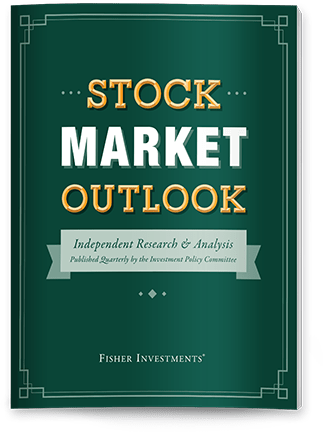Personal Wealth Management / Market Analysis
Market Relief and the EU-US Deal to Make a Deal
Reality is exceeding expectations, which is all stocks need.
Editors’ Note: MarketMinder is politically agnostic, preferring no politician nor any party. We assess developments for their economic and market implications only.
With the August 1 deadline mere days away, the US has another trade deal—or more accurately, another deal to make a deal. As we hinted at on Friday, the US reached a deal with the EU over the weekend. Sentiment seems mixed, and stocks largely sighed—flat Monday and down a smidge Tuesday. We think the deal itself is largely more of the same: long on loose pledges, short on workable details, yet still better than the worst-case scenario markets priced in April. This has been fine for stocks throughout this late spring and summer of dealmaking and probably remains so, even as tariffs remain higher than they were entering the year.
We have seen a lot of commentary calling this a big win for the Trump administration, contrasting the raft of concessions the EU made with the few on the US’s side. We have also seen a ton of blowback from EU heads of government. All of this chatter is political, which we will leave aside—markets don’t do sociology, personalities or anything else dominating that discussion. They deal with a policy’s implications for economic growth and corporate earnings and how those square with expectations. So that is where we focus.
Technically, the agreed-to deal is a handshake of intent—a nonbinding outline for a future agreement both sides will now commence work on. It formalizes a 15% tariff rate on all EU imports except steel and aluminum, which will still face 50% rates. While this 15% rate represents an auto tariff reduction, it raises tariffs on just about everything else American consumers and businesses source from Europe. So at a high level, it creates winners and losers here.
As for the EU’s concessions, they sound big, but the logistics and feasibility look questionable to us. The EU agreed to purchase $750 billion worth of US energy through 2028 and invest $600 billion here “in addition to the over $100 billion EU companies already invest in the United States every year.”[i] In this context, it is unclear what “the EU” refers to—the supranational government itself, member-states’ governments, businesses, private investors or what have you. This detail matters, because the EU itself doesn’t exactly have a massive budget, and most of what it does spend goes to day-to-day operations (its equivalent of the civil service). Oil purchases and investments are typically the purview of the relevant companies, where the EU can’t exactly direct traffic. US oil producers are all private, too, and can sell where they choose.
And then there is the math. All foreign investment is funded with a trade surplus—this is just basic national financial accounting. $600 billion is a whisker less than three years’ worth of EU trade surpluses with the US.[ii] Presumably, buying $750 billion worth of US energy would reduce that surplus (therefore reducing the US trade deficit with the EU), reducing the funds available to invest. Then again, energy analysts near-unanimously say that $750 billion is impossible given the lack of infrastructure and the EU’s green push. We get that the EU is trying to replace Russian oil and gas, but it bought only €21.9 billion ($25.2 billion) worth of Russian fossil fuels last year. Replacing three years’ worth of Russian fuel wouldn’t get us even halfway to the pledged total.[iii]
Other aspects of the deal are similarly fuzzy. It pledges to “eliminate” EU tariffs in unspecified sectors and “provide meaningful quotas for other products.”[iv] It nods to “efforts to eliminate the red tape that US exporters face when doing business in the European Union,” but the pledge is simply that the EU “will work to address” this.[v] Ditto for non-tariff barriers to US agricultural exports. Echoing other recent US deals, it includes an agreement for the EU “to purchase significant amounts of US military equipment,” making one wonder if this whole exercise is just giant stimulus for a US aerospace giant whose name rhymes with Showing or Flowing or Mowing (take your pick).[vi] Digital trade barriers are also mentioned, but it amounts to a giant TBD and a pledge not to raise barriers in the future.
So overall, we see higher tariffs, some handpicked winners at the company level, investment targets of questionable attainability and a whole lot of questions.
We could segue into a long discussion of whether this is “good” or “bad,” but a) that is all opinion and b) markets don’t deal with that anyway. Stocks move most on the gap between reality and expectations. Yes, the tariffs are up from January. But stocks priced that eventuality in early April, between the Liberation Day panic and the 90-day pause. That sharp correction priced the tariffs threatened at the time, which were higher than those about to come into force. We reckon that is really all that matters. We are still living the reality of positive surprise, just because expectations were so awful.
And that is generally all stocks need. They price sentiment in the short term, then gradually weigh how reality shapes up compared to those expectations over the next 3 – 30 months. We are living the weighing now, and it is a relief for markets overall. Meanwhile, US businesses and consumers might not like the tariffs and might feel a hard pinch, but at least having deals eases some uncertainty, letting everyone move forward. The shifting sand is getting a little less shifty, which gives a firmer footing for risk-taking and investment. We don’t have perfect clarity, but it is gradually arriving. Stocks sank on high uncertainty in April, and now they have risen since the low on falling uncertainty—bullish enough.
If you would like to contact the editors responsible for this article, please message MarketMinder directly.
*The content contained in this article represents only the opinions and viewpoints of the Fisher Investments editorial staff.
Get a weekly roundup of our market insights
Sign up for our weekly e-mail newsletter.

You Imagine Your Future. We Help You Get There.
Are you ready to start your journey to a better financial future?

Where Might the Market Go Next?
Confidently tackle the market’s ups and downs with independent research and analysis that tells you where we think stocks are headed—and why.





